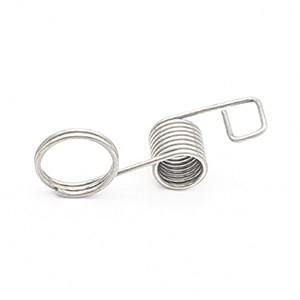Get unique, complex parts easily. No matter your requirements, Chaoyi Spring creates hard-to-produce coil springs and wire forms.
Let us help you create the custom wire form you need, from S-hooks and J-hooks to utility hooks and more.
We work closely with customers across a wide range of industries, helping them design and manufacture made-to-order parts.
Why choose Chaoyi Spring? We prioritize customer-focused collaboration, modern equipment and the latest technology to make your parts per print.
Find the information and guidance you need, from measuring a spring to learning about materials, placing an order and much more.
Have you ever wondered how a spring works, or why it can exert such a powerful force? It's all due to the fundamental relationship between force and displacement, a concept


Have you ever wondered how a spring works, or why it can exert such a powerful force? It's all due to the fundamental relationship between force and displacement, a concept deeply rooted in physics. Compression springs, in particular, are fascinating examples of how this relationship manifests itself in everyday objects, from the suspension of a car to the tiny mechanisms within a clock. In this article, we'll explore the science behind compression springs, delving into the key factors that govern their behavior and unraveling the secrets of their power.

Compression springs are designed to resist compression, meaning they push back when a force is applied that tries to shorten them. Imagine a simple coil spring. When you press down on it, the coils get closer together, and the spring pushes back against your hand. This is because the spring material, often a type of steel, is elastic. It wants to return to its original shape, and the more you compress it, the greater the force it exerts to resist the compression.
This relationship between force and displacement is described by Hooke's Law, a fundamental principle in physics. This law states that the force exerted by a spring is directly proportional to the amount it is stretched or compressed. This means if you compress the spring twice as much, it will push back with twice as much force.
Mathematically, Hooke's Law can be expressed as: F = -kx
Where:
The negative sign indicates that the force exerted by the spring is in the opposite direction to the displacement. If you push the spring down (positive displacement), the spring will push back up (negative force).
The compression of a spring is influenced by several factors, including:
Compression springs are ubiquitous in our daily lives, often unseen but critical for the function of many objects. Here are some examples:
While Hooke's Law provides a good approximation of the behavior of a spring under small deformations, it's important to remember that it doesn't tell the whole story.
In reality, springs can experience fatigue. If a spring is repeatedly compressed and released, it will eventually lose its ability to return to its original shape. This is because the repeated stress can lead to microscopic cracks and damage within the spring material.
Additionally, springs have a limit to how much they can be compressed. If you compress a spring beyond its elastic limit, it will permanently deform. This means that it will not return to its original shape even after the force is removed.
Compression springs are remarkable examples of how the interplay between force and displacement governs the behavior of objects. They are essential components in countless devices and machines, and understanding the principles behind their behavior is crucial for engineers and designers who rely on them. From the simple act of opening a door to the complex workings of a car's suspension, compression springs are an integral part of our modern world, providing a silent but powerful force that shapes our lives.
Understanding the concept of compression springs, their relationship with force and displacement, and the factors that influence their performance is essential for anyone interested in the world of mechanics and engineering. The study of springs not only unlocks the mysteries of everyday objects but also provides a foundation for deeper exploration into the world of elasticity and material science.
Browse some of the custom wire forms and springs that we manufacture. Don’t see what you need? We specialize in made-to-order products that meet your application requirements.
Visit Our GalleryNeed a custom wire form or coil spring? We make it work. Fill out the contact form and a representative will respond within 1 business day. If you have a PDF or CAD file, you can submit to request a quote.